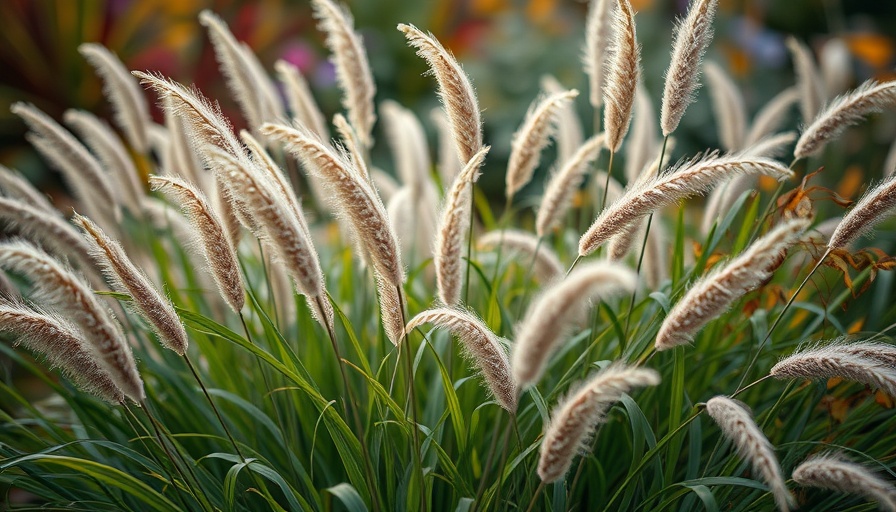
Your Guide to Pruning Ornamental Grasses for a Lush Garden
When it comes to enhancing your landscape, ornamental grasses are a show-stopping choice. They bring excitement to gardens with their textures, colors, and sound—swaying gracefully in the breeze. However, realizing their full potential requires knowing when and how to prune them properly. With advice from experts, we delve into the most effective methods for maintaining these hardy perennials.
Why Prune Ornamental Grasses?
Pruning may seem like a chore, but it plays a crucial role in the health and aesthetics of your ornamental grasses. As they age, old, dried blades can accumulate and create conditions for crown rot—preventing fresh growth from pushing through in spring. Cutting back old foliage not only boosts air circulation but allows for renewed vigor in the plant, showcasing the beautiful green blades that emerge as warmer weather sets in. Essentially, pruning is not just about aesthetics; it helps ensure your grass remains lush and vibrant.
Timing is Everything
Understanding the growth patterns of the different types of grasses can drastically affect your maintenance routine. Ornamental grasses fall into two primary categories: cool-season and warm-season. This classification determines when you should perform your cuts. Cool-season grasses, which grow best in temperatures below 75°F, need to be cut back in very early spring, before new growth starts appearing. Warm-season grasses, on the other hand, thrive through the summer heat and can be pruned in late winter or early spring, right before they start to grow again.
Knowing when to cut back these grasses helps you enjoy the stunning textures during winter while preparing for vibrant growth as temperatures rise. Many gardeners enjoy the sight of frost-kissed blades rustling in the wind, adding visual interest to the cold months.
Best Practices for Cutting Back
To achieve a clean cut and maintain your garden's beauty, it's essential to equip yourself with the right tools. Use sturdy pruning shears or, for larger clumps, an electric hedge trimmer can be fantastic. Always begin by gathering the stalks into manageable bundles; this not only makes cutting easier but also simplifies cleanup. Whether you choose to tie them with biodegradable twine or bungee cords, proper bundling protects you from sharp blades. Securely cut the grass by controlling your movement away from the base, preserving the shape of the remaining grasses. Once done, don’t forget to rake up any stray blades to keep your yard tidy.
Environmental Benefits of Ornamental Grasses
Beyond their visual effects, ornamental grasses provide numerous ecological benefits. Many species are drought-tolerant and suitable for a variety of soils, which makes them an excellent choice for sustainable landscaping. Their ability to thrive with minimal resource investment reflects a resistance to changing weather patterns, a vital trait as we face more extreme climates. Furthermore, these grasses serve as natural habitats and forage for insects, birds, and small mammals during harsh weather—demonstrating their value well beyond just aesthetics.
Practical Tips for Muskegon Gardeners
If you reside in Muskegon, or similar regions, consider integrating ornamental grasses into your landscaping plans. Not only can they enrich your garden, but they also offer an ideal way to create a vibrant, ecologically balanced environment. If you’re planning to start a backyard project, ornamental grasses can be paired beautifully with raised soil beds, offering handy partitions in your garden. When you're crafting outdoor spaces or designing garden aesthetics, consider using these resilient plants to enhance your layout.
Conclusion: When to Schedule Your Pruning
As the seasons change, so do the needs of your ornamental grasses. Timing your pruning to coincide with the natural cycles of the plants will ultimately reward you with healthy growth that enhances your yard's beauty throughout the year. Mastering the cutting techniques outlined can provide a lush and vibrant garden. Ready to start your project? Dive into the world of planting and enjoy the endless benefits of ornamental grasses in your Muskegon garden today!
 Add Row
Add Row 
 Add
Add 


Write A Comment